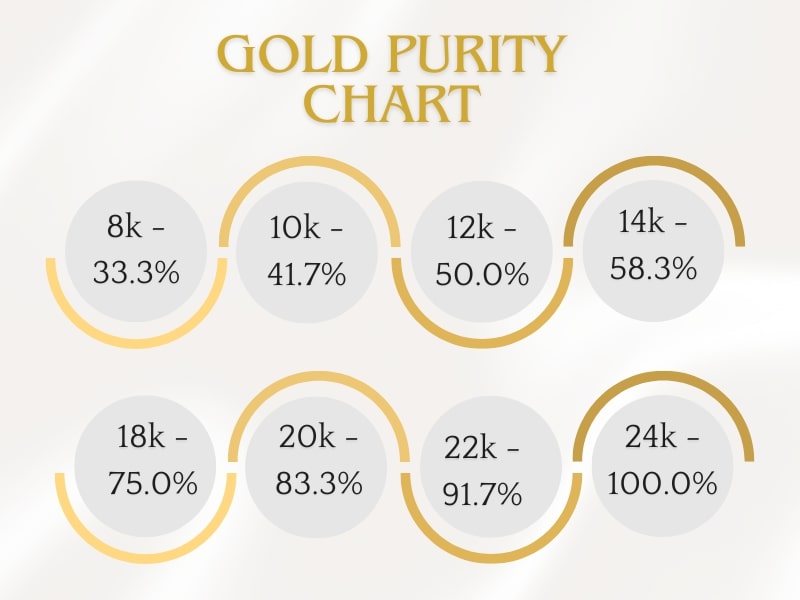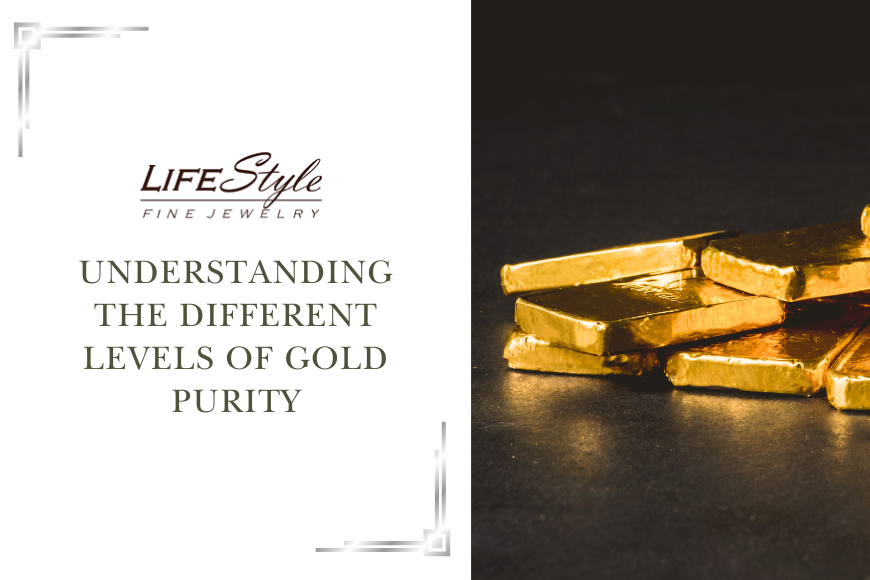Understanding the Different Levels of Gold Purity
Have you ever wondered what determines the value and quality of gold? Understanding gold purity is essential for anyone buying, selling, or wearing gold. The purity of gold, measured in karats, determines its value and suitability for various applications.
In this article, we'll explore the different levels of gold purity and their significance, examine the factors affecting gold purity, and discuss the need for different purity levels for various uses.
We'll also delve into the methods of inspecting gold purity, from traditional testing methods to modern techniques. Join us as we uncover the fascinating world of gold purity and its importance in our everyday lives.
Overview of Gold Purity Levels
Gold purity refers to the pure gold present in a gold alloy, usually measured in karats or as a percentage. The higher the number of karats, the purer the gold.
For example, 24-karat gold is considered pure gold, while 18-karat gold, with an 18 carat gold purity percentage of 75%, contains 75% gold and 25% other metals. Similarly, 22-karat gold, with a 22 carat purity percentage of about 91.7%, contains 91.7% gold and 8.3% other metals.
This purity level impacts not only the value of the gold but also its color, hardness, and durability, making it crucial for various applications from jewelry to technology.
Gold Purity Chart
Refer to the infographic below for a visual representation of gold purity levels and their corresponding karatages.

Why Purity Matters: The Value of Gold
Gold purity is pivotal in determining its value and suitability for various applications. High purity levels, such as 24 karat (99.9% pure), ensure the gold's authenticity and resilience, making it highly desirable for ornamental jewelry and a stable investment.
Pure gold maintains its brilliance over time, resisting tarnishing, which enhances its allure in global markets. In contrast, lower purity levels like 18K or 14K, blended with alloys for added strength, are less valuable by weight but offer greater durability for everyday wear.
Beyond jewelry, gold's purity also dictates its utility in electronics and industrial sectors, where its high conductivity and flexibility are prized. Therefore, purity influences the market price of gold and its functional versatility across different sectors, underlining its importance in various aspects of commerce and industry.
Factors Affecting Gold Purity
Several factors can influence the purity of gold, ranging from market demands to manufacturing processes:
- Market Demands: Consumer preferences drive the demand for different purity levels, from high-purity 24-karat gold to lower-purity alloys like 18K or 14 K.
- Manufacturing Processes: The refining and alloying processes during production impact gold purity. Strict controls are necessary to minimize impurities.
- Alloying Elements: Metals like silver, copper, or zinc are added to gold to alter its properties, affecting its final purity.
- Recycling: Scrap gold recycling can vary in purity based on refining methods and source materials.
- Regulations: Government standards and industry regulations ensure consistency and quality in gold purity levels.
A complex interplay of market demands, manufacturing processes, alloying elements, recycling practices, and regulatory frameworks influences the purity of gold. These factors collectively determine the purity levels that meet consumer expectations and industry standards.
The Need for Different Levels of Gold Purity
Balancing purity with practicality is crucial when selecting gold for various applications, whether crafting intricate jewelry pieces or integrating into cutting-edge technological advancements.
Understanding the right mix involves balancing economic considerations, durability requirements, and consumers' aesthetic preferences, ensuring that each use case benefits optimally from the chosen level of gold purity.
Applications of Gold
Gold serves a multitude of purposes across various sectors due to its exceptional properties:
- Jewelry: Known for its timeless beauty and prestige, gold is crafted into intricate pieces that symbolize wealth and luxury.
- Technology: Gold's high conductivity and corrosion resistance make it indispensable in electronics, ensuring reliable performance in circuitry and connectors.
- Medicine: Used in medical devices for its biocompatibility and durability, enhancing diagnostic tools and treatments.
- Space Exploration: Gold's reflective properties protect spacecraft from radiation, making it essential in thermal control systems.
- Culinary Arts: Edible gold leaf adds a touch of opulence to gourmet dishes and beverages, reflecting its luxury status.
These applications underscore gold's versatility and enduring relevance in modern society.
Balancing Purity and Practicality: Finding the Right Mix
Balancing purity with practicality involves weighing several factors when choosing the right level of gold purity for various purposes:
- Investment: Higher purity (e.g., 24 karat) is preferred for gold bars and coins due to its intrinsic value and ease of resale.
- Jewelry: Lower purity (e.g., 18 karat) balances durability with affordability, making it suitable for everyday wear while maintaining aesthetic appeal.
- Durability: Higher purity gold is softer and more prone to scratching, influencing its suitability for items subject to frequent use.
- Cost: Lower-purity gold alloys offer a cost-effective alternative without compromising on visual appeal or durability for jewelry.
- Cultural Preferences: Different cultures may favor specific purity levels for traditional and ceremonial items, influencing market demand and design choices.
Navigating these considerations ensures that the chosen gold purity aligns with functional needs and personal preferences, whether for investment or everyday use.
Methods of Inspecting Gold
Methods of inspecting gold purity have evolved significantly over time, reflecting advancements in technology and precision.
Traditional Testing Methods
Historically, traditional methods like the touchstone test were prevalent in the UAE and globally. This involved rubbing gold on a touchstone and comparing the resulting streak with known samples of different purities.
Another method, cupellation, heated gold in a cupel to separate impurities based on their reactions.
Modern Testing Techniques
Modern methods in the UAE include X-ray fluorescence (XRF) spectrometry and fire assay techniques. XRF analyzes the elemental composition of gold nondestructively, providing quick and accurate results that are suitable for jewelry and bullion.
Fire assay involves melting a sample to separate impurities and measure gold content precisely, meeting stringent local standards for purity certification.
Final Thoughts
In conclusion, the purity of gold, measured in karats, dictates its value and suitability for diverse uses, from jewelry to technology. Understanding this purity spectrum—from 24 karat to alloys like 18K or 14K—reveals its adaptability and enduring allure across industries.
Explore more about the craftsmanship and practicality of 18K gold on the Lifestyle GCC site, where you can find exquisite pieces that blend elegance with resilience.


